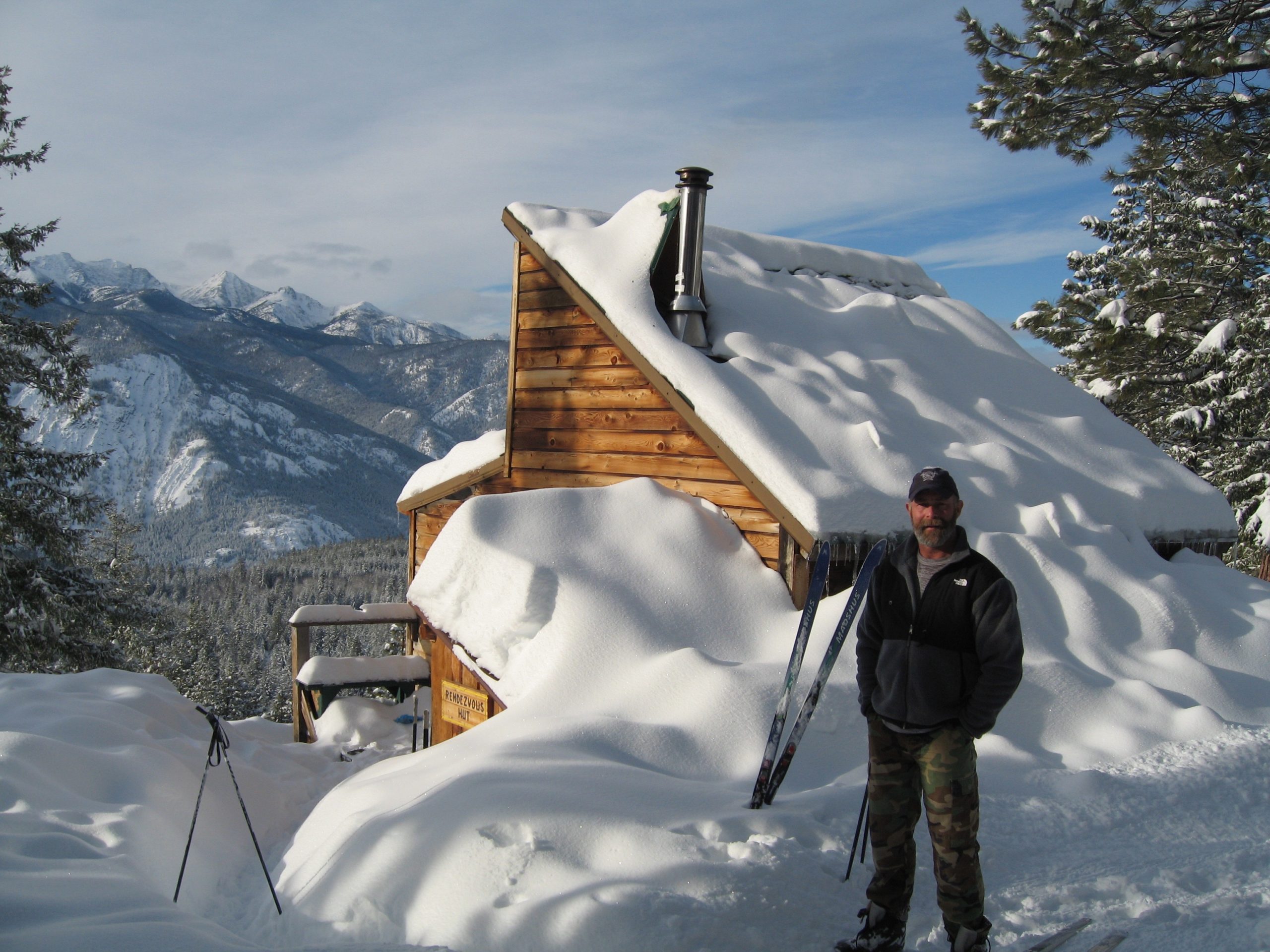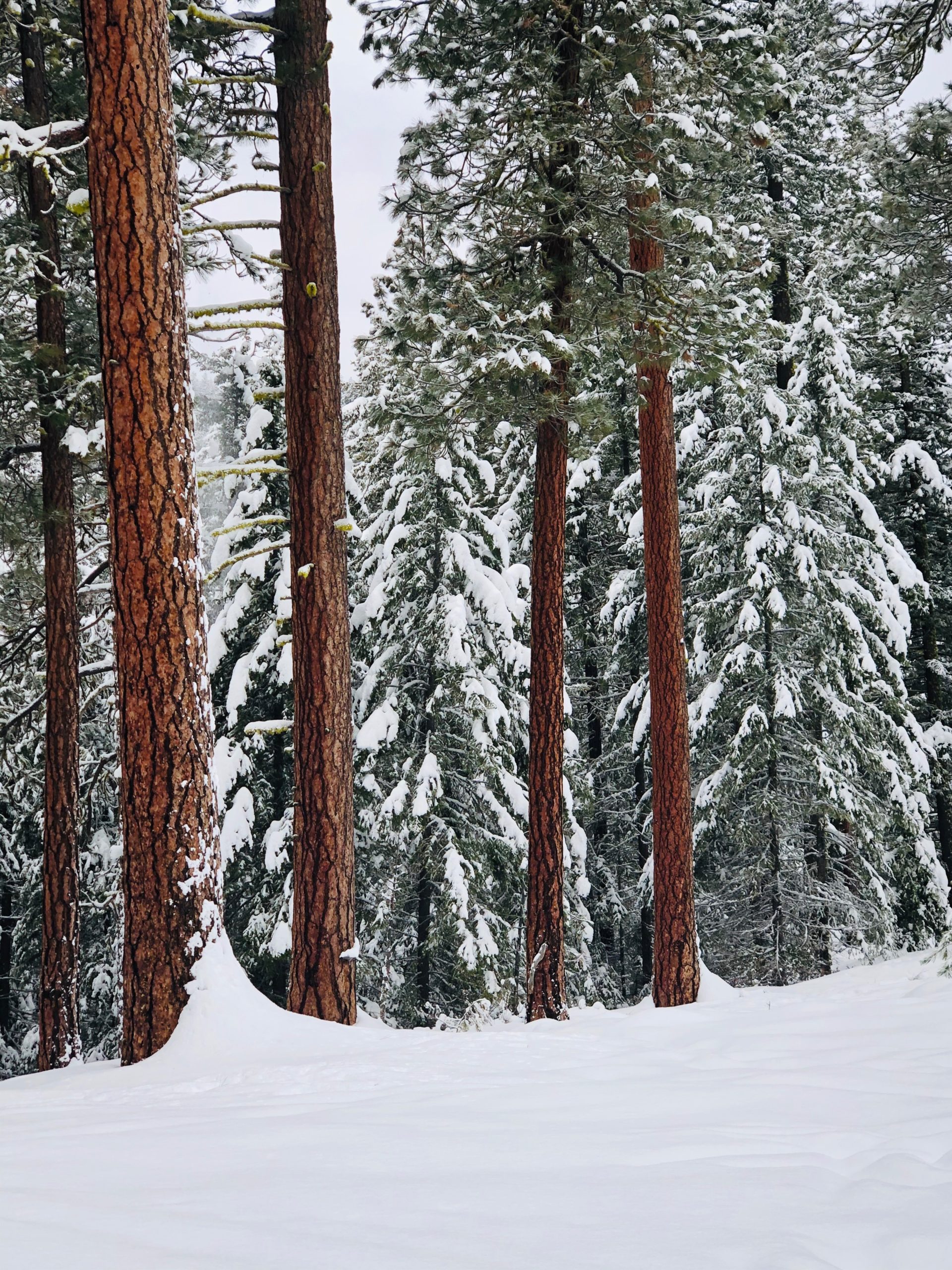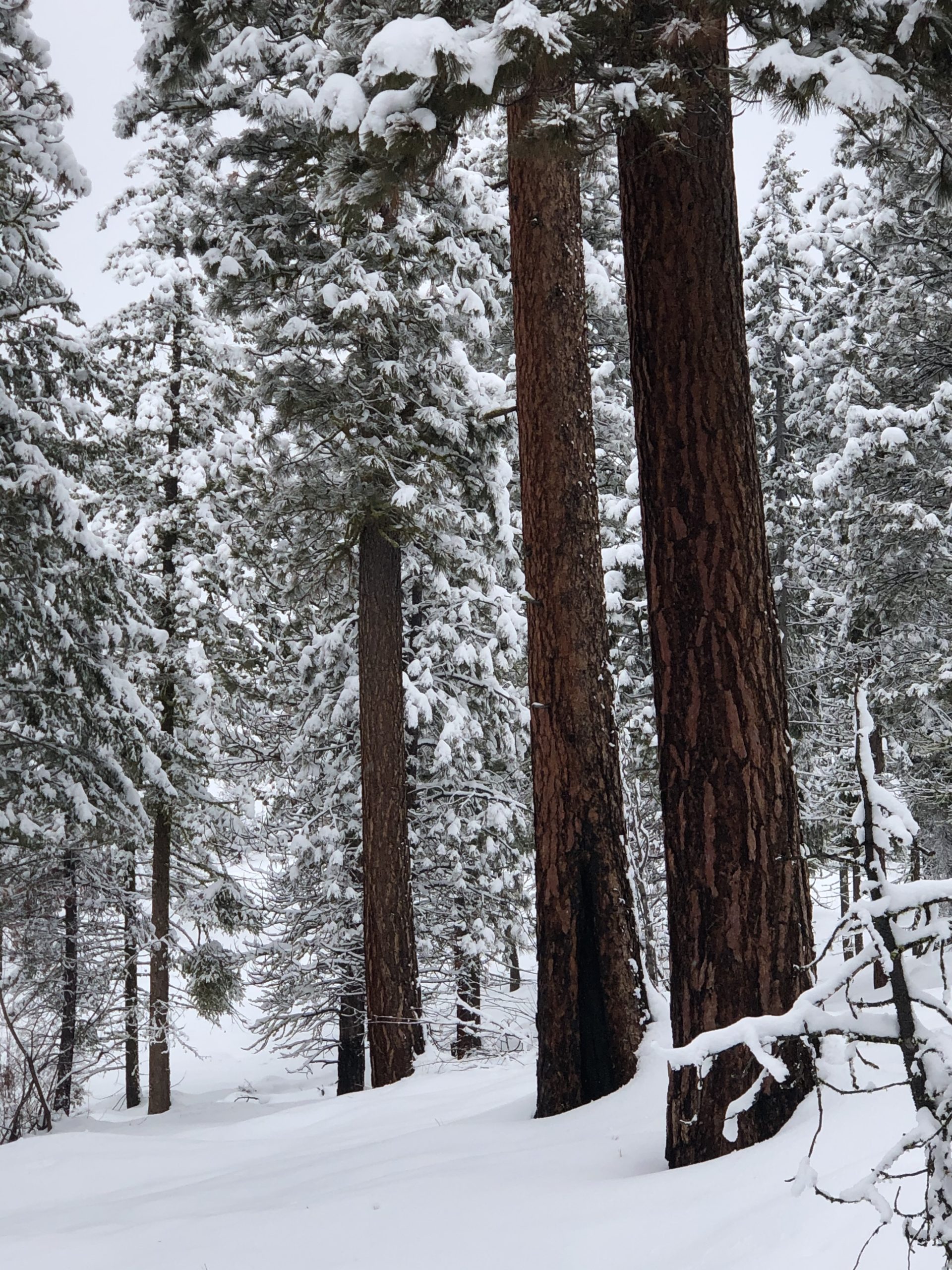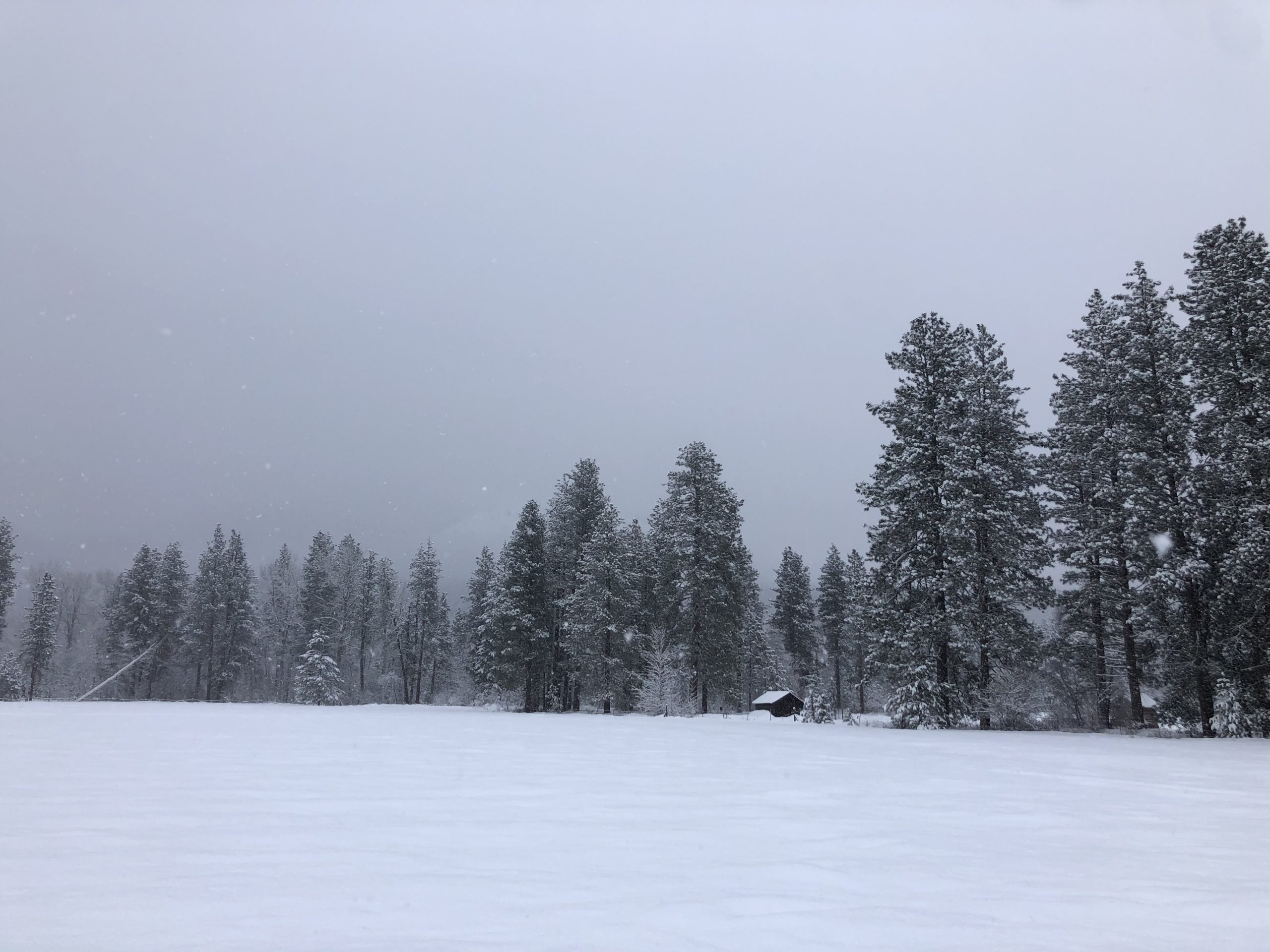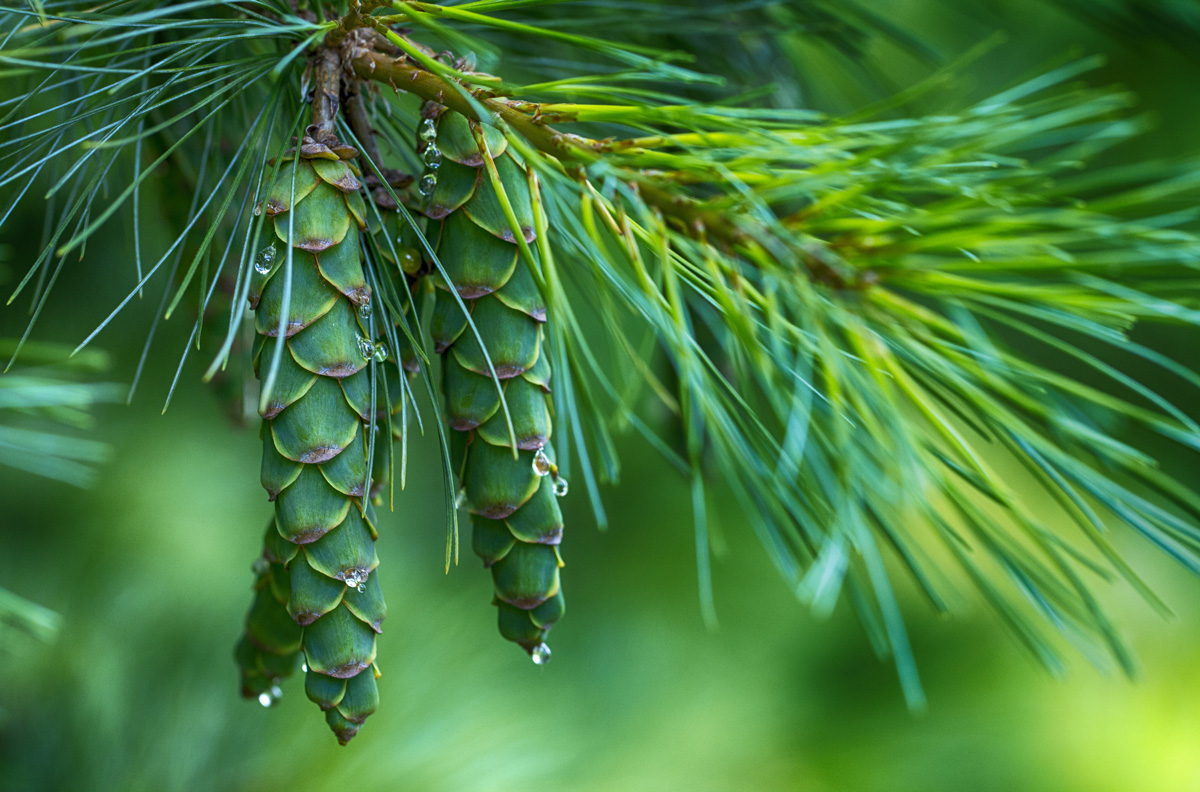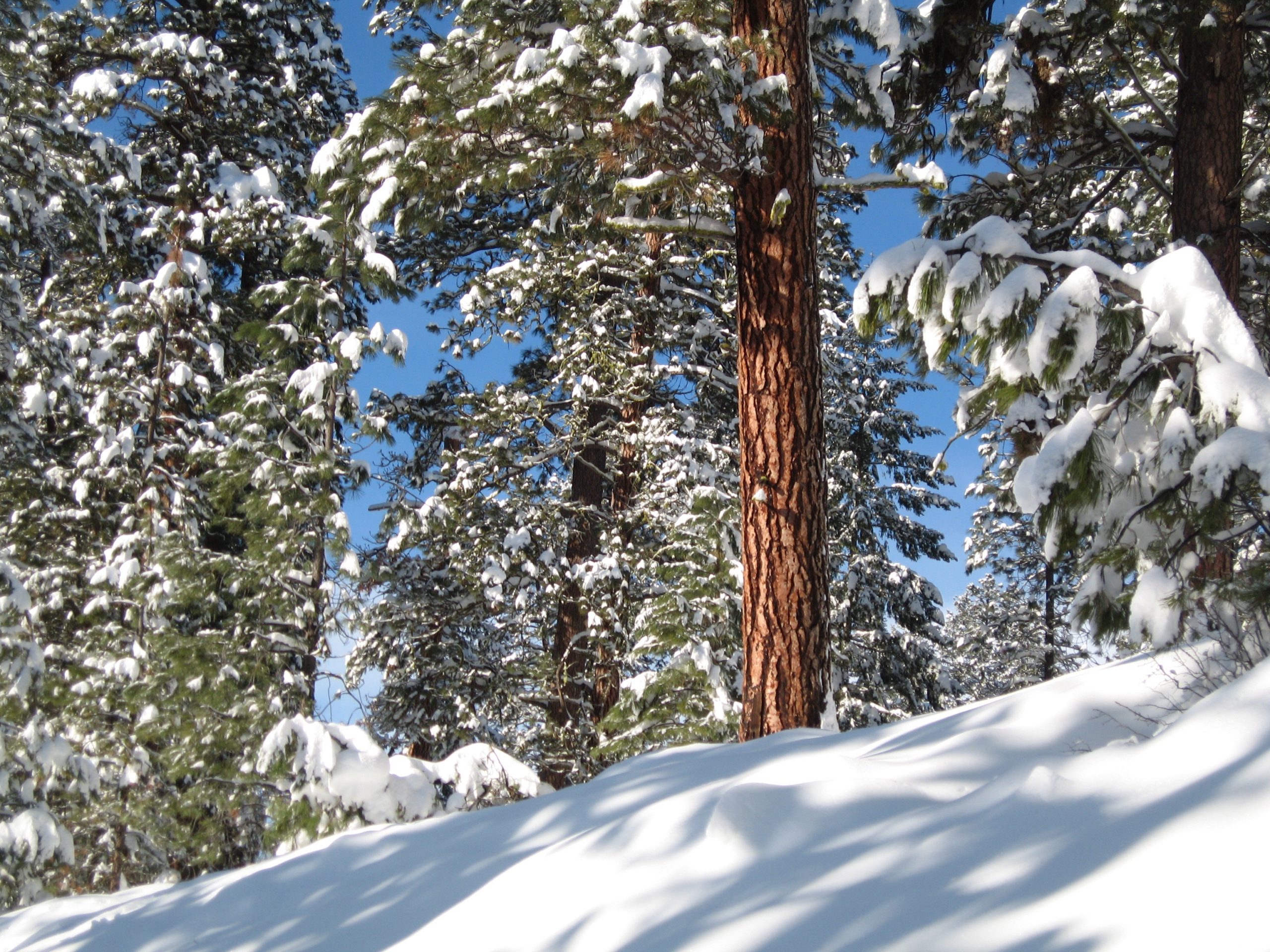
Red, White and Blue
I did not expect to see red
Ponderosa Pines – Methow Valley
January 8, 2021 | AUTHOR: Paul R Broadhurst | PHOTOS: Neil Morrison
Holly berries, yes, but those are in our lowland city and suburban gardens, but up here in a wild winter landscape, the color red? No.
I was in Ponderosa Pine territory, holed up in a rustic hut for the New Year with my partner, high above the Methow Valley in the Cascade Mountain Range of Washington State.
Seeing the cinnamon-red bark of these pines came as a glorious surprise. I was under the thrall of Ponderosa’s for the entirety of my stay with them.
Already a fan of the Scot’s Pine – the only pine native to my British homeland, it too, is easily recognized by its characteristic reddish bark, but this attractive color is only found (demurely) on young growth. The Queen is very fond of them – but I digress. Ponderosa Pines, being American, of course have to take things so very much further. The tree can get huge, too, with 200′ old specimens clad in tones of red and orange. It is a feature of the American montane West.
I have had the pleasure of working with Jon Calvo, a colorist friend of mine for many years now. Colorist’s have one of the loveliest job descriptions out there: they study their surroundings for sources of inspiration, and then like bees with saddle bags full of pollen, they unpack their findings and advise their clients on how best to fit structures into a landscape.
Jon has heightened my appreciation of color. In his work he is often guided by the color of bark from the most frequently occurring species of tree to be found in any given area – he also notes the color of the native soil. This approach has charmed his many clients over the years. Trees ground me, so I was naturally inclined to enjoy hearing of this influence. As a consequence, it could be said that I have become sensitized to all things bark.
Ponderosa Pine bark flakes off in jigsaw shaped scaly plates. Successive layers reveal shades of reds through to oranges. It is a sight to behold.
No wonder then that I was bewitched.
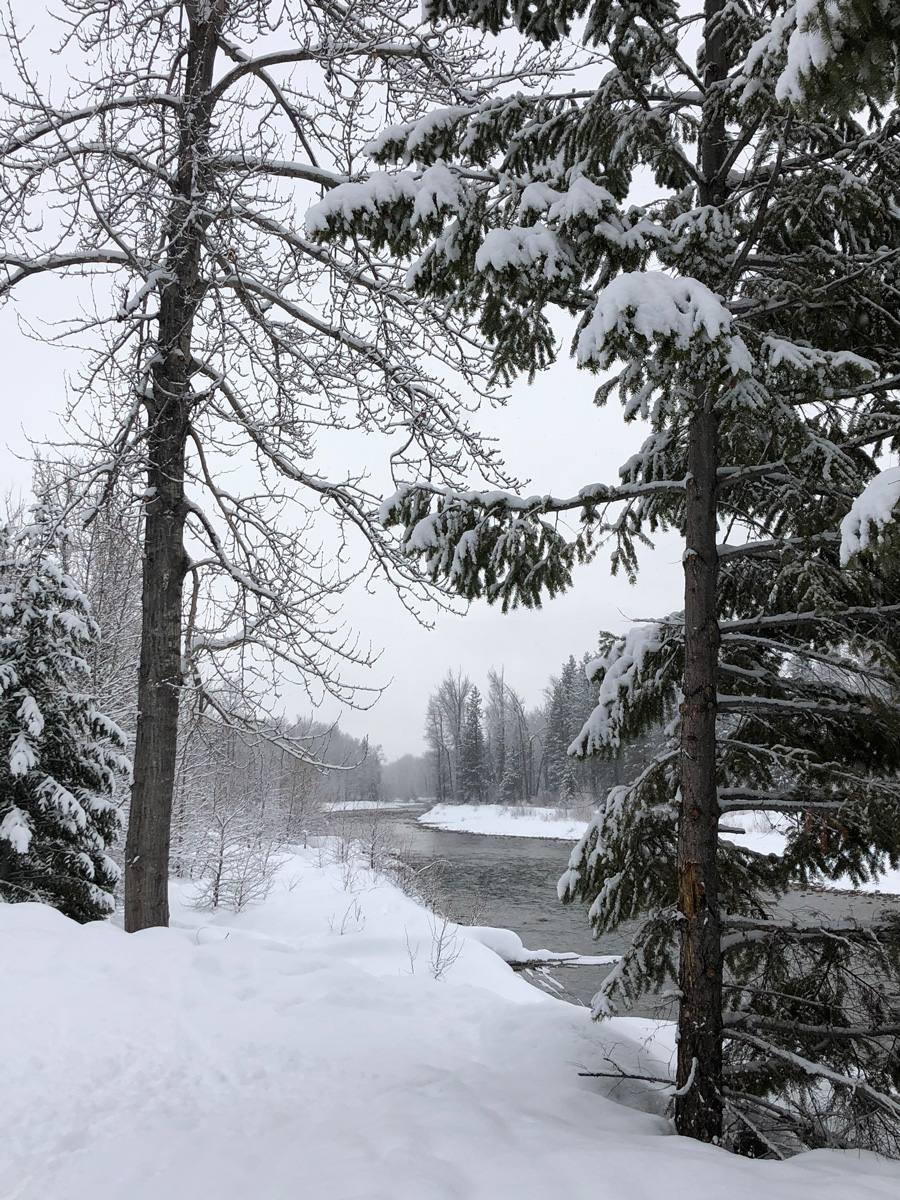
The Methow.
Additional Insight and Information
Ponderosa Pine – Pinus ponderosa
A large tree of striking appearance with visually a tall clear trunk, scaly cinnamon bark and stout, spreading or drooping branches.
Western N. America.
Only the older Ponderosa pine has the characteristic bark color. Younger trees (less than 120 years old) have dark brown to black bark.
An extensive taproot allows Ponderosa to thrive even on the dry south-west facing slopes and ridgelines. This taproot imparts an ecological advantage – a 12″ tall sapling may have a taproot of 5′. These roots can seek moisture deep below while the surface topsoil might be quite dry.
A mature Ponderosa forest has an open-ness to it. Long-needled leaf-litter below the trees’ canopy suppresses other species – an additional advantage. This makes stands of the trees lovely to walk through. It is a ‘pitchy’ tree and the smell of resin is noticeable even in winter.
“I can only imagine the smell in the height of long hot dry summers. I will return.”
– Paul Broadhurst


